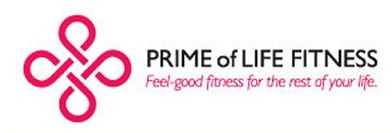I hear from clients and prospective clients all the time: "How can I stay fit now that I'm in my 40s? I'm insanely busy, my body is going to pot, and I can't handle the kind of workouts I did in my 20s and 30s." The answer is pretty simple, really. You're not the same person you were in your 20s and 30s, so your workout needs to change with you. Your schedule has changed, your body has changed, and your goals and priorities have changed,too.
But you can absolutely stay fit, even in spite of those changes.
Start Small
The biggest mistake I see older clients make is trying to bite off more than they can chew--especially if they haven't been active for the last couple of years. You can't just jump right back in with both feet and expect to remain standing. First, get a good posture and movement assessment. You may have postural issues, flexibility concerns or muscle imbalances that need to be addressed first, before you begin a regular workout routine. And then ramp up your exercise routine gradually. Acknowledge that you might need more recovery time between workouts or that you might need to dial down the intensity a notch or two. What matters is that you start now and that you find a pace you can sustain.
Protect Your Joints
I often meet clients in their 50s and beyond with significant exercise limitations, and the worst problems come from joint damage. Torn rotator cuffs, knee injuries and hip problems all make exercise (and even mobility) difficult. So in your 40s, be sure to design your workouts to protect your joints. Again, a good assessment in the beginning will help you identify imbalances and weaknesses that you can address through stability and flexibility training. Starting slowly and building strength and stability around the joints can help protect you from injuries.
Be Consistent
This is a biggie. If you're trying to maintain fitness as you age, it's less about how intensely you exercise and more about how consistently you exercise. The biggest workout derailer I see is all-or-nothing thinking. It goes something like this: "I don't have an hour and a half to get to the gym and get in my full workout, so I'll have to skip it tonight." And then one night becomes two, two becomes three, and before you know it, you haven't exercised in a week. Instead of insisting that you do a "full" workout, try insisting that you do something, even a 10-minute walk around the block, every day. Your goal is to make activity a part of your daily routine. Small habit changes add up to big results over time.
Focus on Health and Function
As your own priorities change over time, so should your workout priorities. In your 20s and 30s exercise might have been all about looking good or feeding your competitive streak. But by your 40s, health, wellness and functionality begin to take on much more importance. Your workouts will begin to get more interesting--and easier to fit into your lifestyle--if you focus on exercise that keeps you healthy, independent and mobile. Functional fitness is designed to help you live your life better, so the payoff for the workouts is very tangible. A functional workout will help you feel better and age better.
Staying fit over 40 isn't a pipe dream, even if you've really let it slide for the last few years. As long as you bring realistic expectations and align your workouts with your goals and priorities, you can remain fit and healthy well into the prime of your life.
Did your workout style change in your 40s and beyond? Share your story in the comments!
(photo credit: Microsoft clip art)


